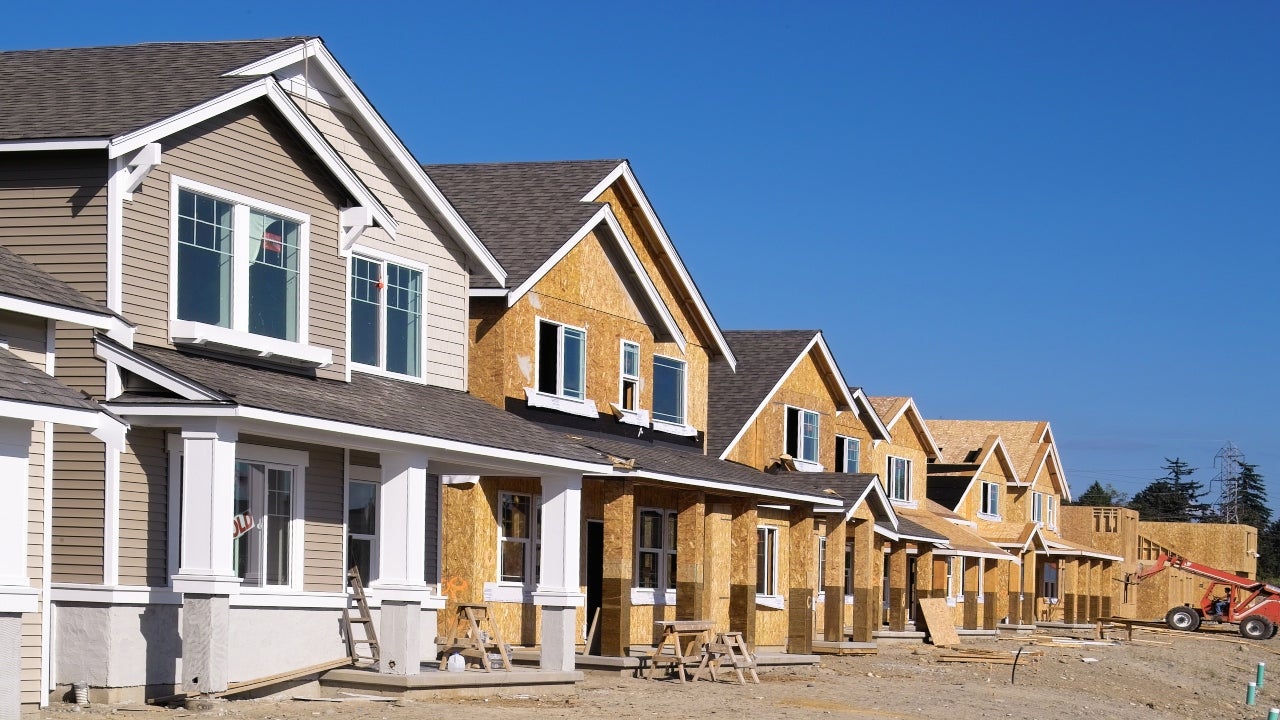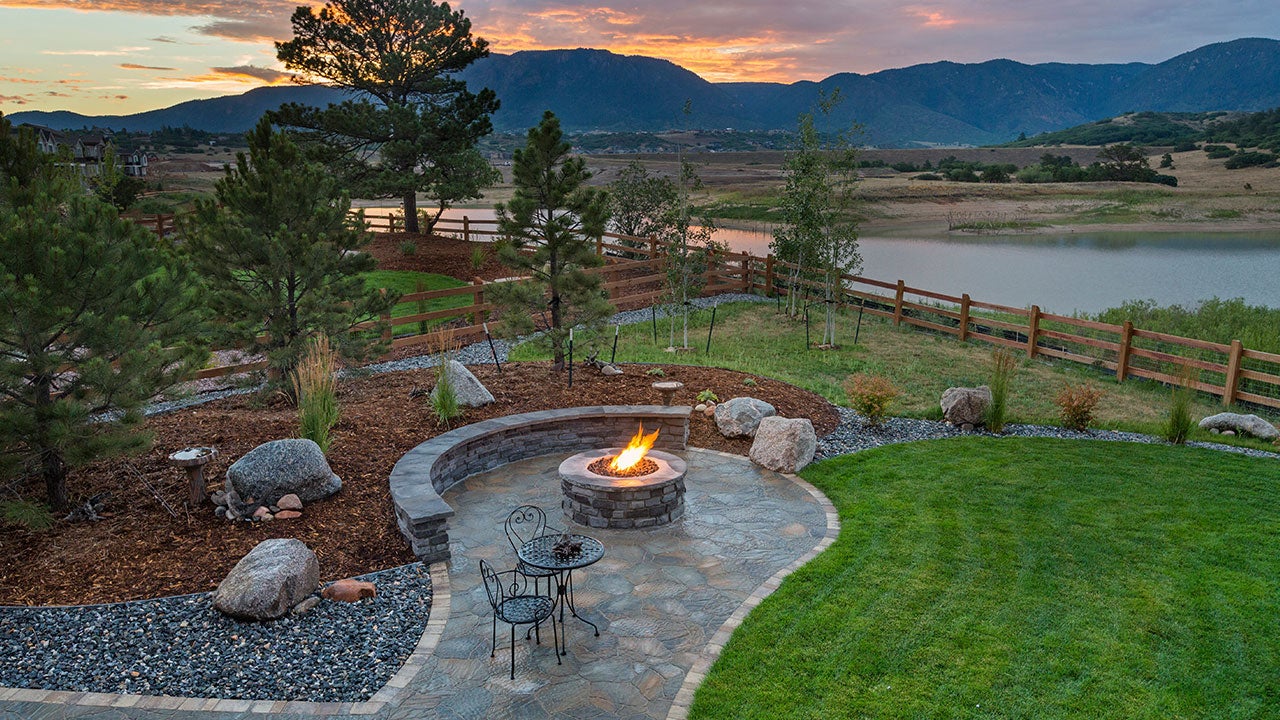Is it better to build a deck or a patio?

When it comes to outdoor spaces to augment your home, both decks and patios are popular choices. Although used for similar purposes (relaxing, entertaining, even working), a deck and a patio have subtle but significant differences, the most important of them being the elevation: A deck is elevated while a patio is flush with the ground.
At least, that’s the quick and dirty definition. There are also key differences in construction, materials, and costs between these two backyard additions. Read on to find out what suits your property, requirements, and lifestyle, and the highs and lows of building a deck or a patio.
What is a deck?
A deck is an open platform that’s attached to the house; it may or may not have a roof or covering. It’s generally elevated and in fact may consist of several levels for easier access from higher floors. As a result, it frequently features stairs, railings and skirting.
There are a variety of materials you can use to build a deck. Some of the most common options are:
- Wood. Some types are more durable, like mahogany or redwood. Softwoods such as pine are pressure-treated: The wood is soaked in a preservative and put under pressure to prevent rot. This causes the wood to take on a greenish hue, which can be painted. The planks can be laid in a variety of patterns.
- Metal, such as aluminum or (less commonly) steel, which is waterproof and makes a good roof. It requires a professional installer.
- Composite decking is a wood alternative that often uses some degree of recycled materials. It is designed to withstand the elements and is available in a variety of colors and finishes. Like natural wood, it can be installed in a variety of patterns.
What is a patio?
A patio is usually a paved outdoor area that may be attached or detached to the house and is on ground level. Some of the popular materials for a patio are:
- Concrete: quick and simple to install, particularly in small areas.
- Gravel: also easy material to work with if you’re doing it yourself, but it requires more maintenance because the stones can migrate and need to be replenished over time.
- Cut stone, including interlocking pavers and flagstone: has a natural look, and allows you to get creative with decorative designs and patterns.
- Brick: a more finished look; commonly available in a variety of colors and textures.
There are decks that are ground-level — which makes the distinction between them and patios somewhat squishy. Generally, it’s the material — the laid-down wood or composite platform that makes it technically a deck.
Cost to build a deck
Homeowners spend an average of $12,600 hiring a professional to build a 320-square-foot deck made of composite materials — which can range from $15 to $47 per square foot — with labor costing anywhere from $11 to $32 per square foot, according to Adam Graham, construction and interior design editor for Fixr.
“For homeowners with experience in carpentry, building a deck costs around $4 to $35 per square foot,” Graham notes. This includes lumber or composite as well as concrete, brackets, nails and other necessary materials. Graham also recommends budgeting an extra $200 for tools or material delivery.
It’s important to be honest about your level of competency with construction before deciding to embark on a DIY deck project, however, says installer and designer Eduardo Gato from WoodDecker in Miami.
“A person who doesn’t really know what they’re doing will go through a lot of extra materials, either material they cut incorrectly or they place incorrectly and have to rip up and start again,” Gato says.
For maintenance, wood decks generally need staining and sealing every two years, along with “an annual power wash which costs on average 30 cents to 40 cents per square foot,” Graham says.
Gato notes that the kind of maintenance you’ll need varies based on the environment. For example, if you live in a particularly wet or sunny area, you might need more frequent sealing or painting, which raises your maintenance expenses.
Cost to build a patio
Homeowners spend an average of $5,400 on a 12-foot by 18-foot patio with pavers laid in an intricate design, according to Graham. This includes a professional labor cost of approximately $2,000.
“The cost to build a patio yourself will depend on the material you choose, which can go from $5 to $10 per square foot for gravel up to $18 to $24 [per square foot] for bluestone,” Graham says, adding that you might need to budget extra for having materials delivered or renting the necessary tools.
Other add-ons like building a pergola or including an awning can add many thousands of dollars to your project costs, depending on the material. When it comes to maintenance, though, you might realize some savings.
“Patios are generally more durable and require less maintenance than a deck,” Graham says. “An annual hose wash is normally enough, and regular checks for cracks — with extreme cracks, the whole patio would need to be removed and replaced.”
Pros and cons of decks and patios
Some other factors to consider, when adding up the advantages and disadvantages of patios and decks.
- Seasonality: Decks tend to absorb and retain less heat than patios, making them a better option for hot climes.
- Space: Depending on your home and yard layout, one structure might be a better use of space. Multi-story homes in narrow yards could benefit from decks, while a patio could wrap around a single-story home.
- Privacy: Because decks are raised, they offer a better view, especially if you live in a scenic location. If you want more privacy, a patio is the right choice.
- Lifespan: Patios last longer than wood decks even though they can get cracked and stained over time. Decks don’t have the same longevity, though they can age well with proper care.
- Ease of maintenance: Decks require greater maintenance, including staining, painting and power washing, to keep the wood in good shape, whereas patios can handle more wear and need less care.
- Resale value: Decks are expensive to build but also tend to recoup their costs better. “Wooden decks have an ROI of 72 percent and composite decks have an ROI of 66 percent,” Graham says. “Patios have a lower ROI [of] around 55 percent in recent years. The one that has seen the most increase in terms of ROI in recent years is adding a composite deck, seeing ROI increase 18 percent since 2017.”
Which is better: deck or patio?
When deciding between a deck and a patio, you’ll need to consider the raw material costs, the cost of installation (either hiring a professional or doing it yourself) and how much the structure will cost to maintain over time. Even though decks have an edge, investment-wise, upgrading your outdoor living space with either a deck or patio could make your property more attractive to buyers when you choose to sell.
So, ultimately, the choice comes down to personal preference and budget. When you’re thinking “deck vs. patio,” think about how you or your family will use the space and what your finances can accommodate. Then consider the materials, style and whether to hire a professional or create the structure yourself.
You may also like

Does APR matter if you pay your credit card off on time?

Should you DIY roof replacement or repairs?

Should I buy a house or build one?



